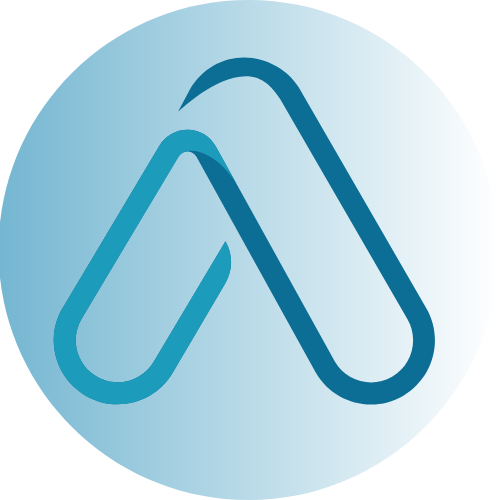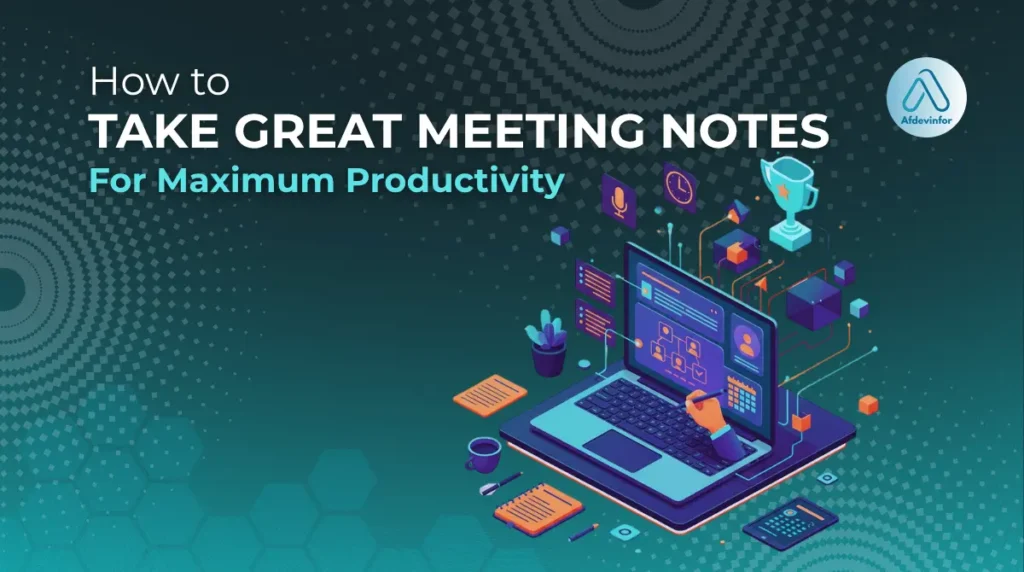From my experience, knowing how to take great meeting notes is one of the most underrated skills in the modern workplace. We’ve all been there: another meeting ends, a flurry of ideas is shared, but a week later, no one remembers who was supposed to do what. This guide is designed to change that. I’m going to reframe meeting notes not as a transcription chore, but as a strategic tool for capturing actionable intelligence.
We’ll move beyond simply recording what was said and focus on creating a blueprint for what gets done. This is my comprehensive, research-backed methodology to help you master this critical skill.
Great meeting notes aren’t just a record of what was said; they are a blueprint for what gets done.
Here’s a quick overview of what this guide covers:
- Importance of meeting notes for tracking decisions and accountability
- Essential components like attendees, key points, and action items
- Tips for structuring and sharing notes effectively
- Recommended tools for digital and hybrid collaboration
- Common pitfalls to avoid when taking or organizing notes
1. The anatomy of effective meeting notes: Key components for clarity and action
To transform your notes from a simple transcript into a powerful tool, you need a consistent structure. Over the years, I’ve found that a standardized framework is the key to clarity and ensuring nothing important slips through the cracks. Consistency is your best friend here.
Here are the essential components I believe every set of meeting notes must contain:
- Date & Time: The basic, non-negotiable starting point for archival and reference.
- Attendees: A list of who was present, which provides context for ownership and decisions.
- Agenda/Objectives: A brief statement on the meeting’s purpose. This helps keep the notes focused on the intended outcomes.
- Key Discussion Points: A concise summary of the main topics discussed. This is not a word-for-word transcript, but a high-level overview of the conversation.
- Decisions Made: An unambiguous record of any resolutions or agreements. This is one of the most critical sections and should be crystal clear.
- Action Items: The most important part. A specific, trackable list of tasks, each with a designated owner and a due date.
- Next Steps & Future Topics: A brief outline of the plan for the next meeting or any topics that need to be addressed in the future.
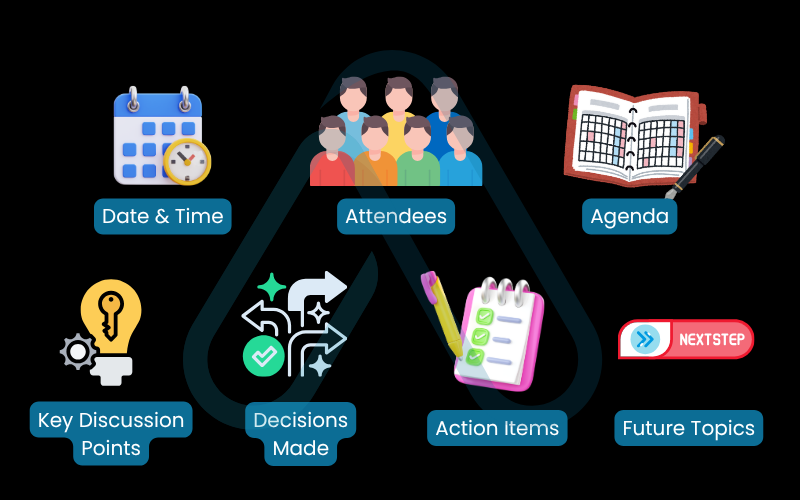
1.1. The universal meeting notes template you can steal today
To make this even easier, I’ve created a simple, tool-agnostic meeting minutes template that you can copy and paste into any text editor, from Notepad to Notion. I’ve added annotations to guide you on what to fill in for each section.
Here is the template you can start using immediately:
# Meeting Title: [Insert Meeting Title]
**Date:** YYYY-MM-DD
**Time:** HH:MM AM/PM [Timezone]
**Location/Link:** [Physical Location or Video Conference URL]
## Attendees
- [Name 1]
- [Name 2]
- [Name 3]
## Agenda / Objectives
1. [Objective 1]
2. [Objective 2]
## Key Discussion Points
- **Topic 1:** [Brief summary of the discussion. Focus on insights and context.]
- **Topic 2:** [Brief summary of the discussion.]
## Decisions Made
- **Decision 1:** [Clearly state the decision reached, e.g., 'Approved the Q3 marketing budget.']
- **Decision 2:** [State the decision.]
## Action Items
| Owner | Action | Due Date |
|-------------|---------------------------------------------|------------|
| [Name] | [Specific task to be completed] | YYYY-MM-DD |
| [Name] | [Another specific task] | YYYY-MM-DD |
## Next Steps / Future Topics
- [Note any follow-up meetings or parked topics for a future discussion.]2. The 3-phase framework: A systematic approach to flawless note-taking
The best notes aren’t just created during the meeting; they are the result of a repeatable system that spans the entire meeting lifecycle. I’ve broken this down into a simple three-phase framework: Prepare, Capture, and Distribute & Track. Adopting this systematic approach removes guesswork and ensures you consistently produce high-quality, actionable notes.
2.1. Before the meeting: Setting the stage for success
I can’t stress this enough: doing 10 minutes of prep saves 30 minutes of confusion later. Walking into a meeting prepared allows you to focus on active listening and capturing insights rather than scrambling to get organized. It’s a small investment with a huge return.
Here is my pre-meeting checklist to set you up for success:
- Review the Agenda: Understand the meeting’s goals. If there’s no agenda, ask the host for one. This helps you anticipate key discussion points and decisions.
- Define Your Objective: What is the primary purpose of your notes for this specific meeting? Is it to track detailed tasks for a project kickoff or to capture high-level strategic decisions for an executive review?
- Prepare Your Document: Create your note-taking document in advance. Copy and paste the template from above and pre-fill the date, attendees, and agenda.
- Collaborate with the Host: If possible, have a quick chat with the meeting organizer to align on the key outcomes they expect to achieve. This gives you an inside track on what to listen for.
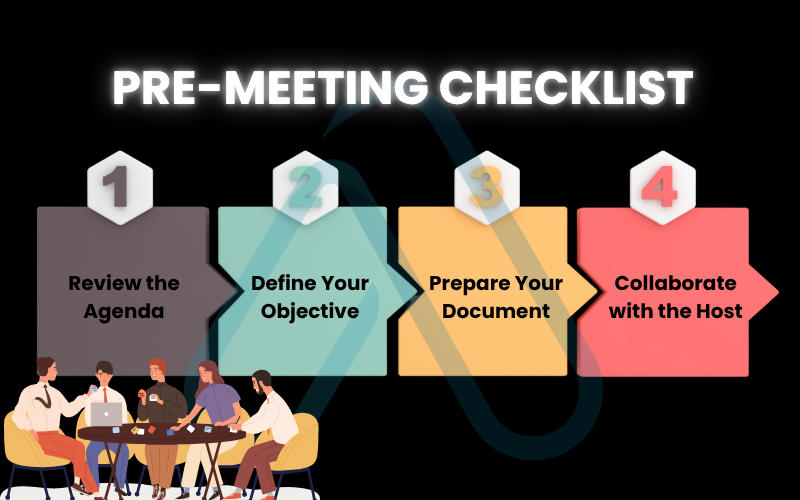
2.2. During the meeting: Capturing what truly matters
This is where the magic happens. Your goal during the meeting is not to transcribe every word but to synthesize the conversation into actionable intelligence. This requires active listening and a strategic mindset. I always remind myself of this core principle:
Don’t be a stenographer; be a strategist. Capture the outcome, not the entire conversation.
Focus your energy on clearly distinguishing between three key types of information: Decisions (what was agreed upon), Action Items (who will do what by when), and Open Questions (what still needs to be resolved). If something is unclear, don’t be afraid to diplomatically interject to ask for clarification, for example, by saying, “Just to make sure I’ve captured this correctly, are you saying that Sarah will own the final report due next Friday?” This proactive approach to accuracy is essential for effective action item tracking and is one of the best practices for meeting documentation.
2.3. After the meeting: Sharing, organizing, and tracking outcomes
Your work isn’t done when the meeting ends. The final, critical step is to turn your raw notes into a clean, effective meeting summary and distribute it promptly. This ensures alignment and kicks off the accountability process. How you organize and share meeting notes with your team can make or break the follow-through.
Here are my best practices for sharing your notes:
- Review and Refine Immediately: Clean up your notes while the context is still fresh in your mind. Correct typos, clarify abbreviations, and organize the information for readability.
- Send Within 24 Hours: Timeliness is crucial. Distributing the summary quickly maintains momentum and ensures action items are top-of-mind.
- Use a Clear Subject Line: Make it easy to find. Something like “Meeting Notes & Actions: Project Phoenix Sync – 2023-10-27” works perfectly.
- Highlight Key Information: Use bolding or a dedicated ‘Key Takeaways’ section at the top to call out the most critical decisions and action items.
- Tag Owners Directly: When sharing in a tool like Slack, Asana, or via email, @-mention individuals next to their assigned action items to ensure they see it.
3. Choosing the right style and tools for any context
As you gain experience, you’ll realize that not all meetings are created equal. A creative brainstorming session requires a different note-taking approach than a formal board meeting. Moving from basic competency to strategic mastery means learning to adapt your style and tools to the specific context. I encourage you to think critically about the meeting’s purpose, formality, and audience to select the best method.
3.1. A curated list of top note-taking tools
The right software can significantly enhance your note-taking process, especially for modern, hybrid teams. Many tools now exist to help automate meeting note-taking and integrate it directly into your team’s workflow. I’ve personally tested dozens, and here are a few I consistently recommend for different use cases:
- Notion: This is my personal favorite for its flexibility. It’s an all-in-one workspace where you can use databases to create powerful, interconnected meeting notes that link directly to projects and tasks. Its best use case is for teams that want a single source of truth for all knowledge.
- Asana: If your meeting is heavily task-oriented, taking notes directly in a project management tool like Asana is incredibly efficient. You can create and assign tasks in real-time right from the meeting agenda. It’s best for project kickoffs and status updates.
- Slack: For quick, informal meetings, a Slack thread or canvas can be sufficient. It’s great for capturing quick decisions and action items that don’t require a formal document. It is best used for daily stand-ups and informal check-ins.
- Otter.ai / MeetGeek: These are AI-powered assistants that join your virtual meetings, transcribe the conversation, and generate an automated summary with action items. They are fantastic supplements to manual notes, especially for ensuring you don’t miss details. They are best for interviews or complex discussions where you need a full transcript for reference.
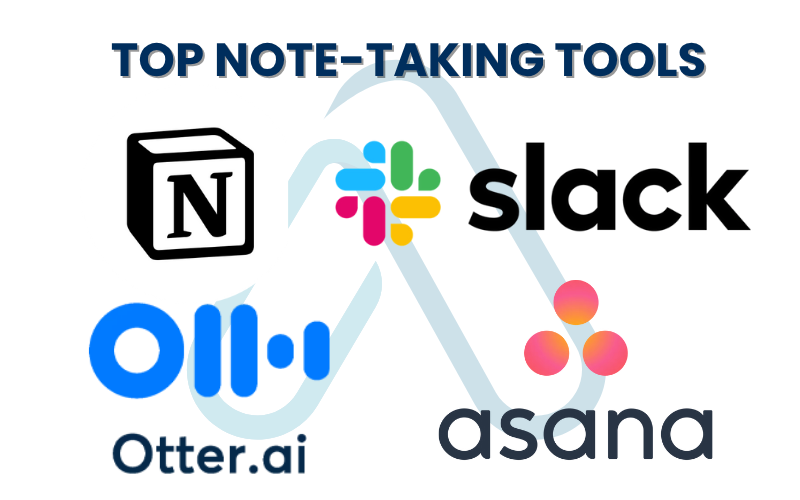
4. Mastering notes for hybrid, diverse, and high-stakes meetings
Once you’ve mastered the fundamentals, it’s time to level up your skills. The modern workplace presents complex challenges, from distributed teams to high-stakes executive discussions that require a more nuanced approach to note-taking. These advanced strategies are what separate a good note-taker from an indispensable strategic partner.
4.1. The hybrid and asynchronous challenge: Keeping everyone aligned
In my work with distributed teams, the biggest challenge is maintaining alignment when people are spread across different time zones. Great meeting notes for remote teams become the connective tissue that holds everything together. The key is to establish a ‘Single Source of Truth’ (SSoT), a centralized, accessible document that everyone can refer to.
Here are some of my best practices for hybrid meeting notes:
- Over-communicate Context: Since remote participants miss non-verbal cues, add a bit more context to your notes to capture the sentiment or rationale behind a decision.
- Share Notes Asynchronously: Use tools like Google Docs or Notion that allow for threaded comments. This enables team members who couldn’t attend to ask clarifying questions and contribute to the discussion after the fact.
- Record for Reference: With consent, record video calls. Link the recording in your notes so team members in different time zones can catch up on the full conversation if needed.
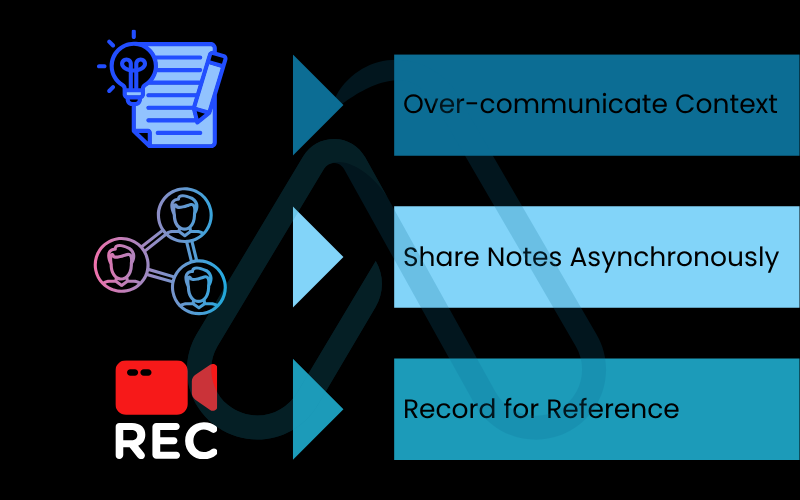
4.2. Fostering inclusivity and accessibility through better notes
This is a topic I’m incredibly passionate about because it’s often overlooked. Your note-taking habits can either create barriers or build bridges. By making your notes more accessible, you’re not just performing an act of courtesy; you’re unlocking the full potential of your entire team, including colleagues who may be neurodiverse, non-native speakers, or hearing-impaired. This contributes directly to a culture of psychological safety and equity.
| Inclusivity Check: Before sharing, ask yourself these questions. Is my language simple and clear? Have I defined all acronyms? Could someone who wasn’t in the meeting understand the key outcomes? This simple check can make a world of difference. |
4.3. Note-taking for executive and board-level discussions
Taking notes for executive leadership or a board of directors requires an elevated level of precision and discretion. In these contexts, your notes often transition into formal ‘meeting minutes,’ which can serve as an official record with legal implications. The emphasis here must be on absolute accuracy and neutrality.
Capture decisions and motions verbatim if necessary. One technique I’ve found invaluable is the ‘read-back’ before the meeting concludes. I’ll read back the key decisions and action items to the group for verbal confirmation. This simple step eliminates ambiguity and ensures everyone leaves with the same understanding.
5. Using meeting notes for continuous team improvement
Too often, meeting notes are filed away and forgotten. I want you to shift your perspective: stop seeing your notes as a static archive and start treating them as a dynamic asset for learning and growth. Your meeting notes are your team’s collective memory; don’t let it fade. By building a searchable knowledge base, you can uncover patterns and drive continuous improvement.
Here are the four steps to turn your archive into an asset:
- Centralize Your Notes: Store all meeting notes in a single, searchable location like a shared Notion database, a Confluence space, or a dedicated folder in Google Drive.
- Tag and Categorize: Use consistent tags for projects, teams, and meeting types (e.g., #ProjectX, #Q4-Strategy, #Weekly-Sync). This makes finding information later incredibly easy.
- Schedule Regular Reviews: Incorporate a review of past action items or decisions into your team’s regular retrospectives or weekly planning sessions.
- Analyze for Patterns: Periodically review notes over a longer period (e.g., quarterly) to identify recurring themes or bottlenecks.
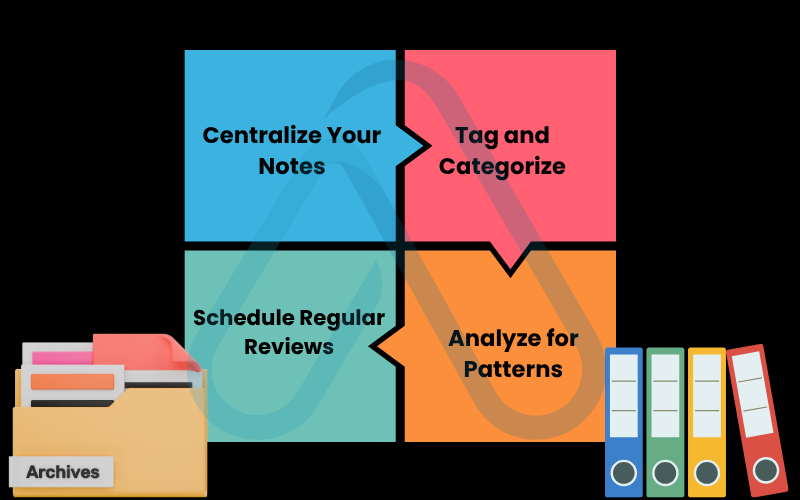
5.1. Analyzing your notes to identify and solve team bottlenecks
This is where your notes become a powerful diagnostic tool. By reviewing a series of notes from a recurring meeting, you can spot patterns that indicate deeper process issues. Look for unresolved discussion topics that appear week after week, repeatedly missed deadlines for similar types of tasks, or conversations where participation is consistently uneven.
This data is gold. For instance, if you see the same ‘Action Item’ appear for three consecutive meetings without being completed, it’s likely not a person problem. It’s a process or resource problem. Your notes just helped you diagnose it, providing a data-driven starting point for improving team productivity.
6. FAQs about taking great meeting notes
Here are answers to some of the most common questions I get about taking effective meeting notes.
Who is responsible for taking notes in a meeting?
There’s no single answer. The role can be rotated among team members to share the responsibility, permanently assigned to a specific person like a project manager, or handled collaboratively in a shared document. The most important thing is to clarify who the note-taker is before the meeting begins to avoid confusion.
How long should meeting notes be?
Clarity and actionability are far more important than length. My rule of thumb is: ‘As long as necessary, as short as possible.’ For most standard team meetings, a concise one-page summary that covers the key components I outlined earlier is ideal.
Is it okay to record a meeting instead of taking notes?
Recording can be a useful supplement, but it’s not a replacement for well-structured notes. A recording provides a full transcript (a pro), but it’s time-consuming to review and can sometimes stifle open conversation (cons). If you choose to record, always get consent from all participants first and use it as a backup to help you refine your written summary.
What’s the difference between meeting notes and meeting minutes?
This is a key distinction. ‘Meeting minutes’ are typically a formal, official record of a board, committee, or shareholder meeting. They often have legal standing and follow a strict format. ‘Meeting notes,’ on the other hand, are usually less formal and are primarily used for internal team alignment, tracking progress, and ensuring accountability on action items.
Glossary of key terms
Here is a breakdown of some of the key terms I used throughout this guide.
| Abbreviation | Full Term | Meaning |
|---|---|---|
| AI | Actionable Intelligence | Information derived from meeting discussions that can be directly used to make decisions or drive specific actions. |
| – | Asynchronous | Communication or work that does not happen in real-time. For example, commenting on a document hours after a meeting has ended. |
| SSoT | Single Source of Truth | A practice of structuring information so that all team members refer to a single, centralized location for the most up-to-date and accurate data. |
| – | Meeting Minutes | A formal, often legally required, record of the proceedings of a meeting, focusing on motions, votes, and official decisions. |
7. Final thoughts: Make every meeting count
Mastering how to take great meeting notes is a learnable skill that pays enormous dividends. It transforms meetings from obligatory time-sinks into powerful engines for productivity, alignment, and clarity. By moving beyond simple transcription to capturing actionable intelligence, you become an invaluable contributor to your team’s success. This is a core part of working smarter, a principle we champion here at afdevinfo.test/ to help you thrive in your career.
Here are the most critical takeaways from this guide:
- Structure is everything: Adopt a consistent template that captures decisions and action items every single time.
- Think like a strategist, not a stenographer: Focus on capturing outcomes and next steps, not every word of the conversation.
- The process is key: Flawless note-taking involves three phases: preparing before, capturing during, and distributing after the meeting.
- Turn your notes into an asset: Use your archive of notes to analyze team performance and identify opportunities for continuous improvement.
I encourage you to pick just one new technique from this guide and apply it in your very next meeting. Stop just attending meetings. Start driving outcomes. For more in-depth guides on boosting your professional skills, explore our Productivity & Automation categories on Afdevinfo.
